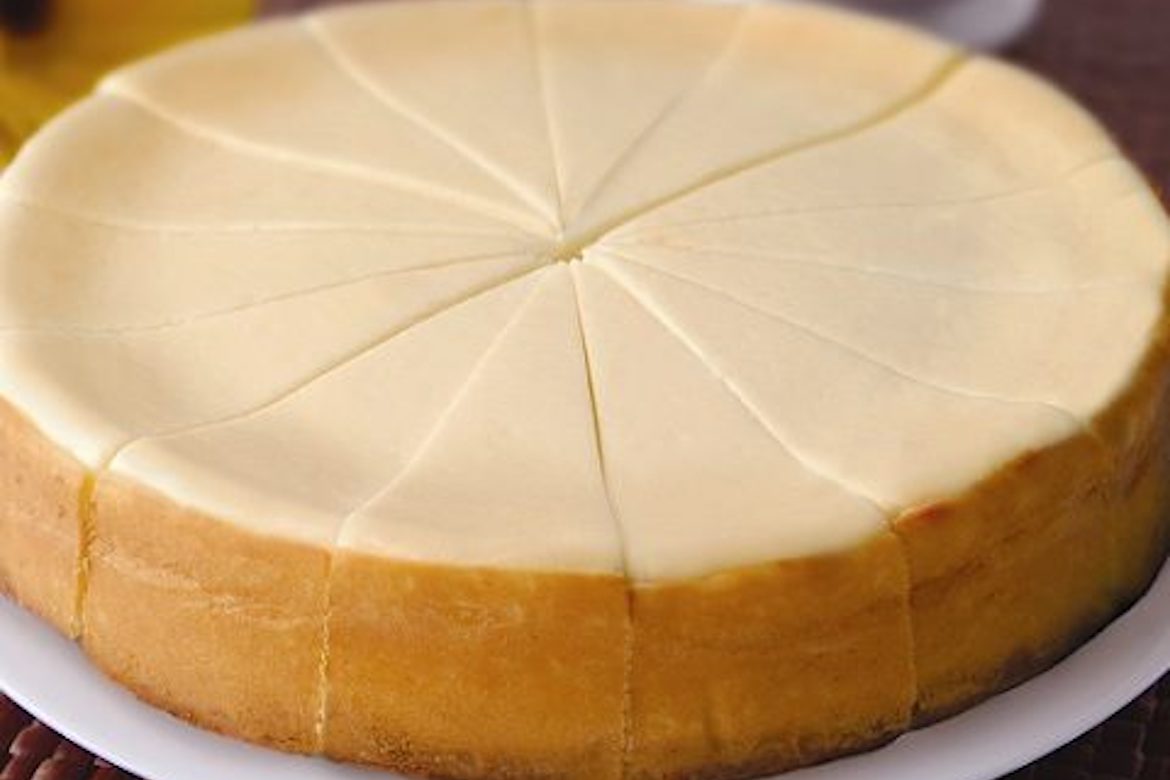The first “cheese cake” was created on the Greek island of Samos, dating to about 2000 BC, according to archaeological finds, including carbon-dated cheese molds that contain a great deal of evidence of what the molds were used for.
Greek brides and grooms were also known to use cheesecake as a wedding cake. It also became a custom for a Greek bride to bake and serve cheesecakes to her new husband’s friends as a gesture of hospitality. Incidentally, this concept eventually paved the way for wedding cakes to become a tradition that continues today.
Food historians believe this delicious desert was served to athletes during the first Olympic Games held in 776 BC as a form of energy to get them through their races and competitions.
The simple ingredients of flour, wheat, honey and cheese were formed into a cake and baked — a far cry from the more complicated recipes available today.
The writer Athenaeus is credited for writing the first Greek cheesecake recipe in 230 AD (by this time, the Greeks had been serving cheesecake for over 2,000 years, but this is the oldest known surviving Greek recipe).
Likewise, Greek physician Aegimus wrote a book on the art of making cheesecakes (plakountopoiikon suggramma).
The recipe was pretty basic: pound the cheese until it is smooth and pasty, mix the pounded cheese in a brass pan with honey and spring wheat flour, heat the cheesecake “in one mass,” allow to cool and then serve.
When the Romans conquered Greece the cheesecake recipe was just one spoil of war. They modified it including crushed cheese and eggs. These ingredients were baked under a hot brick and it was served warm. Occasionally, the Romans would put the cheese filling in a pastry. The Romans called their cheesecake “libuma” and they served it on special occasions.
According to ‘Oxford Companion to Food’ author Alan Davidson, Marcus Cato, a Roman politician in the first century BC, is credited with recording the oldest known Roman cheesecake recipe — several centuries after the Greek recipe first appeared.
As the Romans expanded their empire, they brought cheesecake recipes to the Europeans. Great Britain and Eastern Europe began experimenting with ways to put their own unique spin on cheesecake. In each country of Europe, the recipes started taking on different cultural shapes, using ingredients native to each region.
In 1545, the first cookbook was printed. It described the cheesecake as a flour-based sweet food. Even Henry VIII’s chef did his part to shape the cheesecake recipe. Apparently, his chef cut up cheese into very small pieces and soaked those pieces in milk for three hours. Then, he strained the mixture and added eggs, butter and sugar.
It was not until the 18th century, however, that cheesecake would start to look like something we recognize in the United States today. Around this time, Europeans began to use beaten eggs instead of yeast to make their breads and cakes rise. Removing the overpowering yeast flavor made cheesecake taste more like a dessert treat. When Europeans immigrated to America, some brought their cheesecake recipes along.
Want to know more about the ancient Greek culinary traditions, and what the Greeks ate back then? A good starting point is a book called “The Philosopher’s Kitchen: Recipes from Ancient Greece and Rome for the Modern Cook”, and another great book is “Courtesans and Fishcakes: The Consuming Passions of Classical Athens.”
Archestratus wrote, “Forget all other dessert, there is only one: the Athenian cheese cake with Attica honey from Hymettus,” from Archestratus: Fragments from the Life of Luxury.
Ancient Athenian Cheesecake

Ingredients
Filling
- 4 eggs, separated
- 1/2 cup honey or sugar
- 1 lemon, juice and rind
- 1/2 cup flour
- 1 lb. pot cheese (similar to cottage cheese)
- 1 cup sour cream or yogurt
Crust
- 1 cup crumbs from zwiback rusks
- 1/4 cup ground walnuts or almonds
- 2 tablespoons oil or butter
Instructions
- In a large bowl, beat egg whites until stiff (with a sprinkle of salt).
- In a blender, blend yolks, honey, lemon juice, rind, flour and cheese for a few seconds. Fold batter into egg whites using spatula. Fold in sour cream.
- In a separate bowl mix crumbs and nuts together. Grease the bottom and sides of a large cake pan or spring-form cake pan. Spread crumbs over bottom and sides.
- Pour mixture in cake pan and bake at 350(f)° for 45 minutes. Chill in cake pan 6 hours before cutting and serving.















